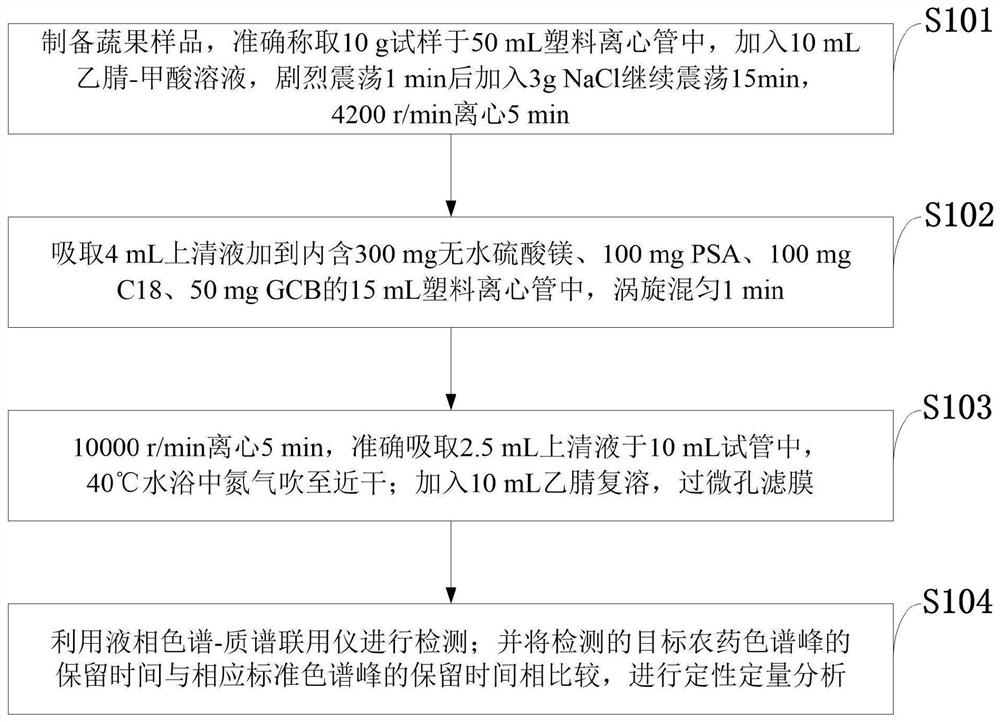Method for detecting 6-chloropicolinic acid in vegetables and fruits
A technology for the detection of clopicolinic acid and its detection method, which is applied in the field of detection of 6-chloropicolinic acid in fruits and vegetables, and can solve the problems of complex detection methods, inaccurate detection results, time-consuming and labor-consuming problems of 6-chloropicolinic acid, and achieve good separation , effective detection method, and the effect of improving the recovery rate
- Summary
- Abstract
- Description
- Claims
- Application Information
AI Technical Summary
Problems solved by technology
Method used
Image
Examples
preparation example Construction
[0045] In step S101, the method for preparing a vegetable and fruit sample provided by the embodiment of the present invention includes: selecting a vegetable or fruit sample, chopping the selected sample, fully mixing it, sampling by quartering or directly putting it into a tissue masher for mashing into a homogenate and put into a polyethylene bottle.
[0046] In step S101, the selected vegetable or fruit samples provided by the embodiment of the present invention include:
[0047]For samples with smaller individuals, all samples shall be processed after sampling;
[0048] For a substantially uniform sample with a large individual, it is processed after being divided or cut into small pieces on the axis of symmetry or on the plane of symmetry;
[0049] For samples that are slender, flat or have different component contents in different parts, cut small pieces or cut into small pieces at different parts for post-processing.
[0050] In step S104, the use of liquid chromatog...
Embodiment 1
[0059] 1 Scope
[0060] The invention is applicable to a liquid chromatography-mass spectrometry method for determining the residual amount of 6-chloropicolinic acid in vegetables and fruits.
PUM
| Property | Measurement | Unit |
|---|---|---|
| recovery rate | aaaaa | aaaaa |
Abstract
Description
Claims
Application Information
 Login to View More
Login to View More - R&D
- Intellectual Property
- Life Sciences
- Materials
- Tech Scout
- Unparalleled Data Quality
- Higher Quality Content
- 60% Fewer Hallucinations
Browse by: Latest US Patents, China's latest patents, Technical Efficacy Thesaurus, Application Domain, Technology Topic, Popular Technical Reports.
© 2025 PatSnap. All rights reserved.Legal|Privacy policy|Modern Slavery Act Transparency Statement|Sitemap|About US| Contact US: help@patsnap.com



